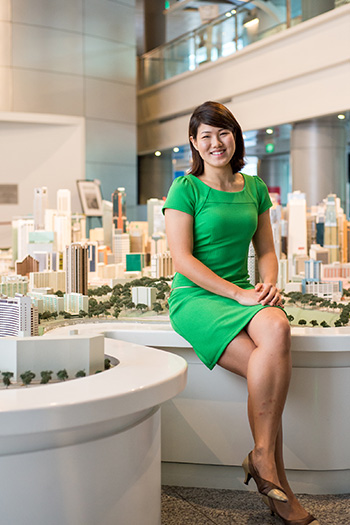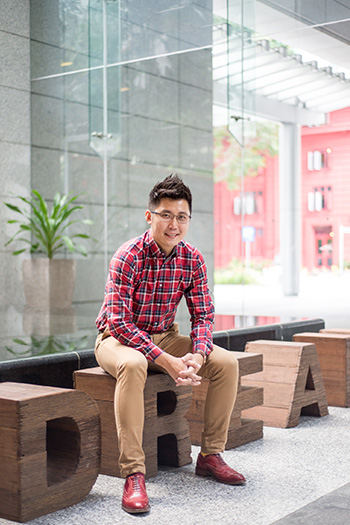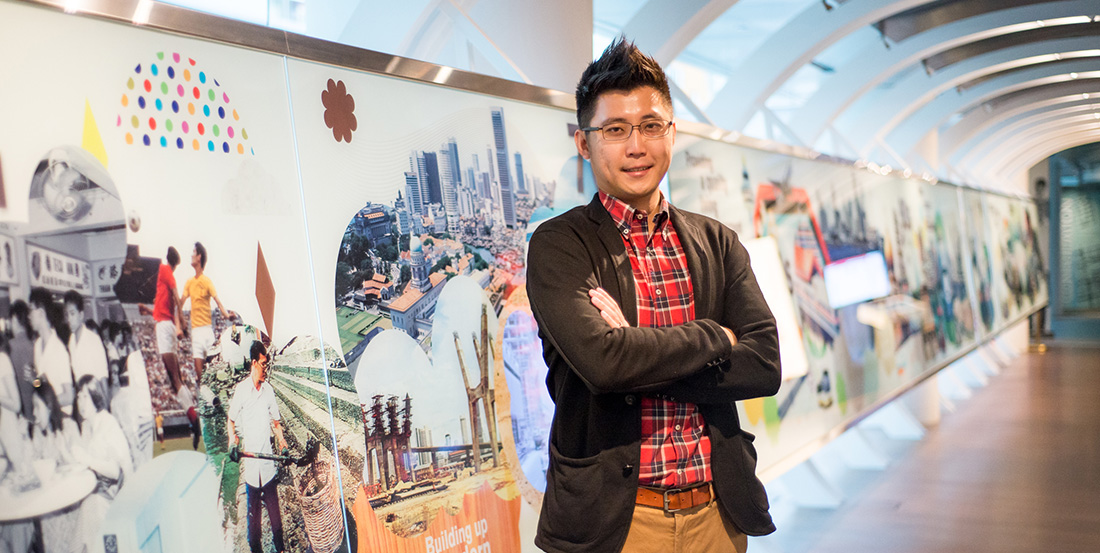The Singapore of the early 1960s was vastly different from the well-planned metropolis and first-rate urban infrastructure that we enjoy today. A look at our glistening skyscrapers or a trip down to the Marina Barrage – where the Marina Reservoir also serves as a choice location for a variety of water sports – will hardly reveal any hint of the struggles with land limitations and poor infrastructure that characterised Singapore’s early years of nationhood.
Singapore’s remarkable transformation into an environmentally sustainable business hub is a result of proactive and farsighted planning by URA. Over the years, URA’s vision to make Singapore a vibrant and distinct global city has seen it expand its roles in areas such as land-use planning, land sales, place management, conservation, urban design and even the promotion of architectural excellence.
In order to adapt and stay ahead in these rapidly changing times, URA employs new and innovative technologies and solutions such as 3D-modelling to help it plan for and improve Singapore’s urban landscape. URA scholars Eugene Lau, 30, and Ng Yi Wen, 25, tell us about their roles in helping URA ensure a balance between economic growth, a good quality of life and a stellar built environment.

Ng Yi Wen
URA Undergraduate Scholar (Overseas)
Designation: Planner, Strategic Planning Group
Studied: Bachelor of Science (Civil & Environmental Engineering), Cornell University, US
Planning for a Future-Ready Global City
Eugene is an Executive Architect in the Conservation and Urban Design Group, where he deals with various aspects in architecture and urban design, project management and Information Technology (IT) systems. He explains, “I am part of the team that conceptualised the master planning and urban design for Jurong Lake District (JLD) – a key part of URA’s decentralisation efforts. JLD has been envisioned as a smart, sustainable and connected mixed-use urban area and the largest regional centre outside our Central Business District.”
And as part of URA’s efforts to realise Singapore’s sustainable development aspirations and leverage on technology and smart planning, Eugene is also part of the team which utilises 3D-modelling to improve their planning workflow. “Together with our Information Systems department, we explore innovative ways to use technology smartly to enhance the way we plan, manage our urban environment and infrastructure and improve the quality of life for residents. We also engage and educate the public using 3D digital models,” he tells us.
“URA has signed a Memorandum of Understanding with Esri, one of the world’s leading suppliers of 3D Geographic Information System (GIS) software. I work closely with GIS experts from Esri to translate our planning guidelines into procedural modelling rules. This brings our planning to a whole new level as architects and planners can now design quick simulations of a development parcel, thus facilitating our work process and enabling us to further improve our plans.”
On Yi Wen’s end, she is a Planner in the Strategic Planning Group, where she oversees land-planning policies related to climate change, nature areas and waste management. She shares, “I take a broad overview of upcoming plans for Singapore and am currently involved in several inter-agency studies that look into the potential impacts of new developments on the environment, in addition to studies on how to better optimise land-use.”
She adds, “I work closely with agencies and researchers to better understand the effects of rising temperatures in a highly urbanised environment like Singapore and identify possible measures to ameliorate these effects to create a cooler and more comfortable living environment. For instance, we are looking into how building massing could improve wind flow and how different types of ground and building surfaces could reduce urban temperatures.
“I also cooperate with agencies and nature groups to enhance and safeguard Singapore’s green spaces by identifying areas that can be retained for public enjoyment. In addition, I facilitate environmental-related studies to ensure that developments are carried out in a sensitive manner that minimises impacts on the environment.”

Eugene Lau Wee Kiang
URA Undergraduate Scholar (Mid-Term)
Designation: Executive Architect,
Conservation and Urban Design Group
Studied: Bachelor of Arts (Architecture) and Master of Architecture, National University of Singapore
Opportunities Abound
URA also dedicates considerable resources to support its staff in their career development and pursuit of upgrading. For URA staff, URA is indeed the place to work, develop and grow.
As a URA Mid-Term Undergraduate Scholar, Eugene has had the opportunity to intern at URA before he graduated from the National University of Singapore. He shares, “My internship allowed me to interact with my future colleagues and even meet members of URA’s senior management. I was able to gain experience in the process of drafting policies and contribute urban design ideas to enliven the Bras Basah Bugis district.
“Furthermore, URA has in place a robust mentorship programme that pairs scholars with a mentor in university and when they join URA. We can arrange to meet our mentors and consult them on things like module selection or even our thesis topics.”
And in his role as Executive Architect, Eugene had the opportunity to co-lead the Draft Master Plan Exhibition in 2013, where URA hosted a public exhibition and engaged the community to gather feedback on its plans. He recalls, “I worked closely with contractors to develop the exhibition content for the Central Area. In order to add flair to the exhibition and bring in new technological elements, we introduced an interactive augmented reality app on iPads that allowed visitors to trigger digital 3D models embedded with information to complement the rest of the exhibits.”
Eugene’s work with Esri’s 3D GIS also led him and his team to be invited to present URA’s work at the Esri User Conference Plenary Session in San Diego, US, to a crowd of more than 15,000 professionals and enthusiasts. He enthuses, “This was a rare opportunity that I was very privileged to have!”
For Yi Wen, the Cornell University graduate has enjoyed her fair share of enlightening experiences. She recounts, “My eight-week internship at URA exposed me to its various planning departments. It really gave me a head-start in my career as I could draw links between URA’s work and my studies and think about how I could apply my knowledge in my future career.”
Yi Wen has also had the opportunity to work with innovative technological solutions as part of URA’s endeavours to tackle urban heat island effects. Yi Wen enthuses, “Like Eugene, I have benefitted from 3D-modelling technology, as well as computational fluid dynamics techniques, in modelling the effects of various urban plans and designs on urban wind flow and air temperature.”
She adds, “I also got to accompany our Minister of State for National Development Desmond Lee and Emeritus Senior Minister Goh Chok Tong to India to discuss Singapore’s involvement in India’s plan to build ‘100 Smart Cities’.”
Serving the Public
For Eugene, the idea of playing a role in improving the public realm appealed to him greatly. He shares, “Being an architect in URA is very different from working in the private sector as our main purpose is to serve the public. As a mid-term scholar, I had more time to understand what architecture was about in my early years in NUS, and ascertain that this was the path I wanted to take.
“In fact, I was not your typical straight ‘A’s scholar. Grades are not everything when it comes to a URA scholarship and URA is instead looking for holistic, well-rounded individuals who want to contribute!”
Yi Wen chimes in, “I was always interested in the built environment and cities. Furthermore, I knew that I wanted to create liveable and sustainable spaces for people to live in.
“Aspiring scholars should bear in mind that a scholarship is not a ticket to a free university education. They must be certain of their choice and make an effort to do their research and speak to the relevant people to find out more. Above all, they must know themselves well in order to make an informed choice!”

